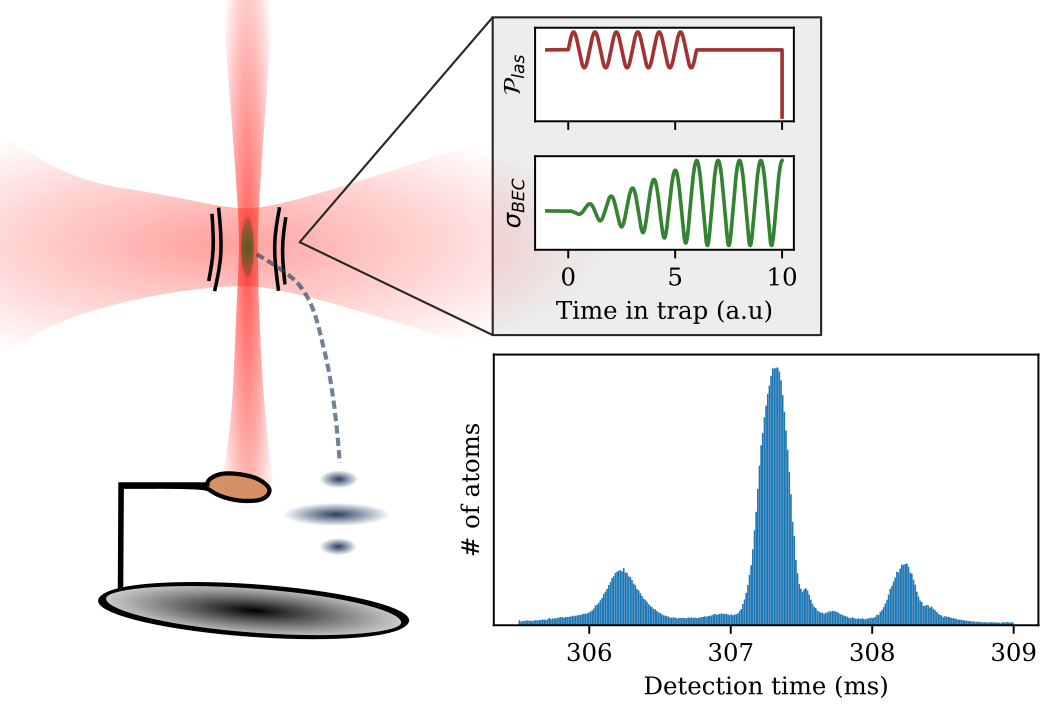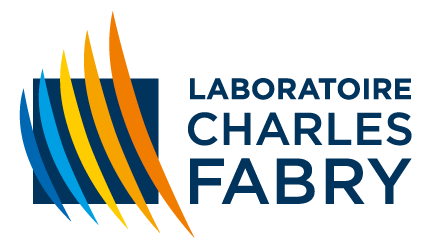PhD
On the entanglement of quasi-particles in a Bose-Einstein Condensate - from Faraday waves to the Dynamical Casimir Effect
 The boat & the crew
The boat & the crew
I did my PhD work under the supervision of Denis Boiron and Chris Westbrook, in the Quantum Atom Optics team in the Laboratoire Charles Fabry within Institut d’Optique, member of Université Paris-Saclay.
The manuscript has officially been published on these.fr but is also available as a HTML or PDF file ![]() . If focuses “On the entanglement of quasi-particles in a Bose-Einstein Condensate”. It presents strong analogy with various related fields in physics, the Faraday instability, the Dynamical Casimir Effect and the parametric excitation of particles in the Early Universe (preheating).
. If focuses “On the entanglement of quasi-particles in a Bose-Einstein Condensate”. It presents strong analogy with various related fields in physics, the Faraday instability, the Dynamical Casimir Effect and the parametric excitation of particles in the Early Universe (preheating).

 Context
Context
Parametric resonance is a recurrent phenomenon in physics, observable across all scales. It was first observed in 1831 by Faraday, who noticed that a container of water excited vertically in a sinusoidal manner generates patterns with a frequency that is half that of the excitation. This phenomenon also leads to the production of photons in a cavity whose mirror is periodically moved: a phenomenon known as the dynamical Casimir effect. In the primordial universe, after inflation, parametric oscillations of a field called the inflaton led to the creation of particles, whose thermalization subsequently gave rise to the hot, dense state often associated with the Big Bang.

The growth in the number of quasi-particles or particles in the excited mode(s) is triggered by the system’s thermal fluctuations. When the system is initially empty, at zero temperature, quantum fluctuations initiate this growth. When particles are produced in pairs in two modes, the final state is entangled, which is a signature of particle creation from vacuum. In the early universe, it is believed that particles were produced through broad parametric resonance, resulting in a product of two-mode squeezed states. As the population in each mode grows, particle interactions lead to decoherence and thermalization.
In my PhD thesis, we experimentally study the dynamics of quasi-particle creation from vacuum in a Bose-Einstein condensate subject to parametric excitation, an analog preheating experiment.
 Experiment
Experiment

When the transverse radius of a Bose-Einstein condensate is temporally modulated, it induces a radial collective oscillation at twice the transverse frequency, known as the breathing mode. This excitation is particularly noteworthy due to its weak coupling to thermal excitations via Landau damping. Notably, the breathing mode couples to two longitudinal modes with opposite momenta, whose frequency is half that of the breathing mode. Upon releasing the cloud, the collective excitations are transferred to individual atoms, which then move away from the central condensate. We detect these atoms using a micro-channel plate positioned 46 cm below the trap, allowing for the electronic detection of the position and impact time of individual particles: we measure the gas 3D momentum distribution at the single particle level.
These collective excitations have already been studied in three other setups and were referred to Faraday waves. Here, we aim to focus on the early dynamics and to demonstrate the entanglement of the two modes.
 Contributions
Contributions
In the manuscript, we
- Introduce a new method to quantify entanglement of two-mode Gaussian state based on the measurement of n-body correlation functions (more details here or in Chapter 2).
- Experimentally implement pulse shaping techniques to deflect the BEC and to prevent saturation of the detector (see more here or in Chapter 3).
- Experimentally study the dynamics of the growth, comparing with theoretical predictions. In particular, we measure that the growth is slower than predicted due to the decay of quasi-particles as predicted recently by Micheli & Robertson (2022) (more information in Chapter 5).
- We experimentally observe the emergence of entanglement between the two modes and its subsequent disappearance (see more here or in Chapter 6).


